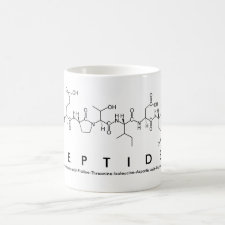
Authors: Wu XQ, Zhang Z, Li JH, You HY, Li YB, Chen LX
Article Title: Molecularly imprinted polymers-coated gold nanoclusters for fluorescent detection of bisphenol A.
Publication date: 2015
Journal: Sensors and Actuators B: Chemical
Volume: 211
Page numbers: 507-514.
DOI: 10.1016/j.snb.2015.01.115
Alternative URL: http://www.sciencedirect.com/science/article/pii/S0925400515001422
Abstract: A flexile fluorescent sensing strategy for the recognition and detection of bisphenol A (BPA) has been proposed based on molecularly imprinted polymers (MIPs)-coated gold nanoclusters (AuNCs), by taking advantages of the high selectivity of MIPs and the strong fluorescence property of AuNCs. SiO2@AuNCs were initially prepared by making use of the powerful amido bonds between carboxyl-terminated AuNCs and amino-functionalized SiO2 nanoparticles. Then MIPs-coated AuNCs were formed by anchoring MIP layer on the surface of SiO2@AuNCs via a sol - gel process. In the presence of imprinting template BPA, a Meisenheimer complex could be formed between BPA and the primary amino groups on the surface of the AuNCs, and the photoluminescent energy of AuNCs would be transferred to the complex, and thereby result in the fluorescence quenching of AuNCs. The fluorescence-quenching fractions of the sensor presented a satisfactory linearity with BPA concentrations over the range of 0-13.1 μM and the detection limit could reach 0.10 μM. Distinguished selectivity was also exhibited to BPA over other possibly competing molecules. Moreover, the sensor was successfully applied to determine BPA in seawater, and the average recoveries of BPA at three spiking levels ranged from 91.3 to 96.2% with relative standard deviations below 4.8%. This AuNCs-MIPs based sensor provided great potentials for recognition and determination of phenolic environmental estrogens in complicated samples
Template and target information: bisphenol A, BPA
Author keywords: Gold nanoclusters, Molecularly imprinted polymers, fluorescent detection, bisphenol A



Join the Society for Molecular Imprinting

New items RSS feed
Sign-up for e-mail updates:
Choose between receiving an occasional newsletter or more frequent e-mail alerts.
Click here to go to the sign-up page.
Is your name elemental or peptidic? Enter your name and find out by clicking either of the buttons below!
Other products you may like:
 MIPdatabase
MIPdatabase









